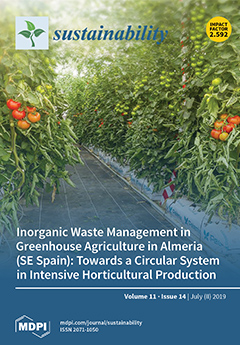A signalized intersection is a high fuel consumption and high emission node of a traffic network. It is necessary to study the emission characteristics of vehicles at signalized intersections in order to reduce vehicle emissions. In this study, the combination of a car-following
[...] Read more.
A signalized intersection is a high fuel consumption and high emission node of a traffic network. It is necessary to study the emission characteristics of vehicles at signalized intersections in order to reduce vehicle emissions. In this study, the combination of a car-following model and the vehicle specific power emission model was used to estimate the vehicle emissions, including the CO
2, CO, HC, and nitric oxide (NO
X) emissions, at unsaturated signalized intersections. The results of simulations show that, under the influence of the signal light, the substantial changes in a vehicle’s trajectory increase the CO
2, CO, HC, and NO
X emissions. The CO
2, CO, HC, and NO
X emissions from vehicles at signalized intersections were further analyzed in terms of signal timing, vehicle arrival rate, traffic interference, and road section speed. The results show that an increase in the signal cycle, the vehicle arrival rate, and the traffic interference amplitude result in increases in the CO
2, CO, HC, and NO
X emissions per vehicle at the intersection inbound approach, and an increase in the green signal ratio and the vehicle road section speed within a specified range has a positive significance for reducing the CO
2, CO, HC, and NO
X emissions of vehicles in the study range. The proposed method can be flexibly applied to the analysis of vehicle emissions at unsaturated signalized intersections. The obtained results provide a reference for the control and management of signalized intersections.
Full article





